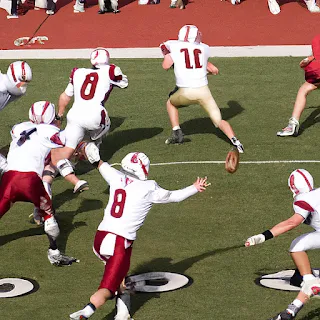The evolution of college football offenses
 |
| The evolution of college football offenses |
College football offenses have evolved significantly over the years, with changes in rules, technology, and coaching philosophies driving much of the change. Here are some key milestones in the evolution of college football offenses:
The single-wing formation: This offensive scheme was popular in the early 1900s and was characterized by a heavy emphasis on the running game. It involved a center, two guards, two tackles, and two backs in the backfield, with one of the backs typically serving as the primary ball carrier.
The T-formation: In the 1940s, the T-formation became popular, featuring a quarterback under center, a fullback behind him, and two halfbacks flanking him. This formation opened up more options for passing plays, as the quarterback was in a better position to throw the ball.
The spread offense: In the 1990s, the spread offense began to gain popularity, with coaches like Steve Spurrier and Urban Meyer employing the scheme to great success. The spread offense involves spreading out the defense with multiple wide receivers and using quick passes and running plays to exploit holes in the defense.The read-option: The read-option is a variation of the spread offense that became popular in the 2000s. It involves the quarterback reading the defense and deciding whether to hand the ball off to a running back or keep it and run himself, based on what he sees from the defense.
Air Raid offense: In the 2010s, the Air Raid offense, which emphasizes passing plays, became more popular. The offense typically features a spread formation with four or five wide receivers, and the quarterback often throws the ball on most plays.RPO (Run-Pass Option): RPO is another evolution of the spread offense where the quarterback has the option to either hand off the ball to a running back or pass the ball to a receiver based on what he sees from the defense. RPOs can be very effective because they force the defense to commit to stopping either the run or the pass, which can create opportunities for big gains.
Overall, the evolution of college football offenses has been driven by a desire to gain a strategic advantage over opposing defenses. As new schemes and strategies are developed and refined, coaches continue to push the boundaries of what is possible on the football field.